Choosing the right mattress is crucial for achieving a restful night's sleep and maintaining overall well-being. With the growing popularity of bamboo mattresses, it’s useful to understand how they compare to traditional mattresses. Lie back and relax as we dive into the characteristics of both types, exploring their features and benefits. You’ll find everything you need to know in the debate of bamboo mattress vs traditional mattress in this guide, from a breakdown of mattress material to environmental impact, so you can select the mattress that best suits your individual needs and preferences.
Understanding traditional mattresses
Traditional innerspring mattresses have been the go-to choice for many years, with some competition from latex mattresses, and most recently, memory foam. Each of these options offers different benefits, which means the best choice ultimately comes down to personal preference.
What is an innerspring mattress?
An innerspring mattress is a type of mattress made from metal coils or springs that provide support and structure. These springs are covered by padding, foam, or fabric for added comfort. Invented in the late 1800s, it’s one of the oldest and most common mattress types. Many modern mattresses still recognise the supportive qualities of innerspring support, combining springs with memory foam, which has led to the birth of hybrid mattresses. Here are the main benefits of traditional innerspring mattresses:
-
A firm, supportive mattress, ideal for back and stomach sleepers
-
Helps to maintain spinal alignment
-
Open coil structure allows for better airflow
-
Springs give a bouncy feel
-
An affordable, budget-friendly option
What are memory foam mattresses?
Memory foam mattresses are made from a soft, pressure-relieving viscoelastic polyurethane foam that moulds gently to your body shape but returns to its original shape once the pressure is released. They provide personalised support by evenly distributing body weight, helping to relieve pressure points, reduce motion transfer, and enhance sleep comfort. This type of mattress structure means it has many supportive benefits for sleepers:
-
Pressure point relief for aches and pains
-
Provides motion isolation so sleep is not disturbed when the partner gets up in the night
-
Contours to the body, evenly distributing weight and relieving pressure points on shoulders, hips and back
-
Retains its shape for many years
What are Latex Mattresses?
A latex mattress is a type of mattress made primarily from latex foam, which can be derived from natural rubber, synthetic materials, or a blend of both. Latex mattresses are known for the following benefits:
-
Highly durable and resilient
-
Natural or organic latex mattress options are eco-friendly
-
Breathable, hypoallergenic and cooling
-
More responsive than memory foam

Exploring bamboo mattresses
Bamboo mattresses have gained significant popularity in recent years due to their unique properties and improvement to sleep. We’ll explore exactly what makes them stand out in the market, giving a breakdown on bamboo mattress benefits.
What is a bamboo mattress made of?
Bamboo mattresses are made from bamboo fibres, which are known for their breathability and moisture-wicking capabilities – this is often combined with other technologies such as memory foam or springs. Usually, these fibres are found in both the cover and the layers of the mattress. Bamboo mattresses are often praised for their hypoallergenic and antimicrobial properties, making them an excellent choice for individuals with allergies or sensitivities. They’re temperature-regulating, too, meaning you won’t overheat as you drift off, but you’ll stay warm during colder nights, especially if you combine your bamboo mattress with dreamy bamboo bedding.
Additionally, bamboo is an organic and eco-friendly material, making a breathable bamboo mattress an environmentally conscious option. When growing bamboo, the plant requires 30% less water than cotton – it also sequesters carbon, making it a much more sustainable choice. Sleep expert, Max Kirsten, advises, 'Opting for bamboo bedding reflects a commitment to sustainable living, as the cultivation and production processes have a lower environmental footprint compared to traditional bedding materials.' There are many benefits of bamboo mattresses, including durability and sustainability, but they’re typically more expensive and harder to come by compared with traditional options.

How Do Bamboo Mattresses Compare to Traditional Mattress Types?
When comparing traditional mattresses to bamboo mattresses, consider the filling for your best rest. We’ve weighed up the pros and cons of bamboo and the most common traditional mattress types.
Bamboo vs. Memory foam mattress
Pros:
- Good quality memory foam can last for many years without needing a replacement
- Supportive, contouring to sleeping position and helps with joint pain
- Inbuilt motion isolation, so you’re not disturbed when your partner moves in the night
- Comes in various forms such as gel-infused, solid or shredded
Cons:
- Heat retention – traditional memory foam traps heat
- Less breathable than bamboo or latex
- Can release VOCs or off-gassing, causing a chemical smell
- Not as eco-friendly as bamboo
Bamboo vs. Innerspring mattress
Pros:
- Affordable and budget-friendly, less expensive than bamboo mattresses
- Supportive, aligning the spine
- Compared with memory foam, innerspring coils are less dense and encourage airflow
- Reinforced edges on the mattress are beneficial for those who sleep near the edge of the bed
- More availability compared with bamboo mattresses
- Bouncy with ease of movement
Cons:
- Can feel too firm and uneven, which is not good for side sleepers, leading to pressure on shoulders and hips
- Transfers movement so sleepers are easily disturbed by their partner in the night
- Not as eco-friendly as bamboo as often innerspring mattresses are made with synthetic materials
Bamboo vs. Latex mattress
Pros:
- Latex is durable, and maintains its natural shape for a long time
- Open cell structure allows for excellent breathability and airflow
- Similarly to bamboo, latex is resistant to dust mites, making it ideal for those who suffer with allergies
- A sustainable option, natural latex is made from the sap of rubber trees
- Provides support by relieving pressure points on the joints and lower back
- Motion isolation limits interrupted sleep
Cons:
- More expensive than other mattress types
- Dense and heavy
- Does not provide edge support like an innerspring mattress
- Can be considered too firm
- Initial off-gassing odour
- If you’re allergic to latex, bamboo is a better choice
Making an informed decision
When comparing mattress types, it's important to prioritise your specific needs and preferences. Consider factors such as your sleep position, breathability, health concerns or allergies, and preferences for firmness and support.
Cooling & Breathability: Why Bamboo Wins
So, are bamboo mattresses worth the money? If you tend to sleep hot or have allergies, a bamboo mattress is the right choice for you. With temperature regulation to keep you cool, bamboo also promotes airflow and provides breathability throughout the night. Naturally antibacterial and hypoallergenic, it’s an ideal option for those with allergies or hay fever.
Support & Back Pain Relief
If the bamboo mattress has orthopaedic grade foam filling or has been endorsed by an orthopaedic expert, a bamboo-infused memory mattress will give optimum support to those who suffer back pain, relieving pressure points and aligning the spine. Counteracting the heat retention of the foam, the bamboo fibres provide a cool and comfortable sleep.
Eco‐Friendliness & Sustainability
A bamboo plant is a renewable resource, growing up to three feet per day and not requiring replanting. It also needs less water than cotton in production. It’s kind to the planet, making it a sustainable choice for a mattress.
Conclusion
Choosing the right mattress is a significant investment in your sleep quality and overall well-being. Bamboo mattresses offer the benefits of breathability, hypoallergenic properties, and sustainability, while traditional mattresses provide a wide range of options in terms of comfort and support. Eco-friendly bedding options are really important when it comes to buying new homeware. By understanding the characteristics of both types and taking into account your specific needs and preferences, you can make an informed decision and select the mattress that will provide you with the ultimate sleep experience. Sweet dreams await now that you’ve read our organic mattress showdown!
FAQ
1. How long does a bamboo mattress last?
A bamboo mattress typically lasts around 8–10 years, depending on care, use, and the mattress quality. Regular rotation and proper maintenance can help extend its lifespan.
2. Should I choose bamboo or memory foam?
Choose bamboo if you want breathability, eco-friendliness, and moisture-wicking benefits. Memory foam is better for contouring support and pressure relief. Bamboo mattresses often combine both for optimal comfort.
3. Is a bamboo mattress worth the money?
Yes, bamboo mattresses are usually worth the investment. They're highly breathable, eco-friendly, durable, and hypoallergenic, offering excellent long-term comfort and value.
4. How do I choose the right mattress for me?
Consider your sleep position, body type, temperature preferences, and any allergies or sensitivities. Look for comfort, support, breathability, and durability. Trying a mattress with a trial period can also help you decide.
5. Are bamboo mattresses eco-friendly?
Yes, bamboo mattresses are very eco-friendly. Bamboo grows rapidly without pesticides, needs minimal water, and is sustainably harvested, making bamboo a great environmentally conscious choice.

![[MattressTopper] Panda London Memory Foam Bamboo Mattress Topper package box](http://pandalondon.com/cdn/shop/files/Bamboo_Mattress_Topper_Package_Box.webp?v=1742301823&width=1500)
![[MattressTopper] Panda London Memory Foam Bamboo Mattress Topper on the floor](http://pandalondon.com/cdn/shop/products/Panda-Memory-Foam-Bamboo-Mattress-Topper-Yoga-e1624045454555.jpg?v=1742301823&width=1000)
![[MattressTopper] Bamboo Mattress Topper Lifestyle Image with Memory Foam Pillows Product Page](http://pandalondon.com/cdn/shop/files/Bamboo_Mattress_Topper_Lifestyle_Image_with_Memory_Foam_Pillows_Product_Page.webp?v=1742301823&width=800)
![[MattressTopper] Bamboo Mattress Topper Lifestyle Image with Bamboo Pillows In the Garden room Product Page](http://pandalondon.com/cdn/shop/files/Bamboo_Mattress_Topper_Lifestyle_Image_with_Bamboo_Pillows_In_the_Garden_room_Product_Page.webp?v=1742301823&width=800)
![[MattressTopper] Panda London Memory Foam Bamboo Mattress Topper side](http://pandalondon.com/cdn/shop/files/Mattress_Topper_Isolated_-_resized.jpg?v=1742301823&width=800)
![[HybridMattressPro] Hybrid Bamboo Mattress Pro with T3 Platinum Award and The Telegraph 2025](http://pandalondon.com/cdn/shop/files/Mattress_Pro_with_Two_Awards_Product_Image_webp.webp?v=1741265625&width=1000)
![[HybridMattressPro] Breathable Hybrid Bamboo Mattress](http://pandalondon.com/cdn/shop/products/Breathable-Hybrid-Bamboo-Mattress.jpg?v=1740148067&width=1920)
![[HybridMattressPro] Hybrid Bamboo Mattress Pro Cover Zip](http://pandalondon.com/cdn/shop/files/Hybrid_Bamboo_Mattress_Cover.jpg?v=1740148067&width=800)
![[HybridMattressPro] Panda Hybrid Bamboo Mattress Pro](http://pandalondon.com/cdn/shop/files/Hybrid_Bambo_Memory_Foam_Mattress_-_BioCell_Foam_x.jpg?v=1749202892&width=800)
![[HybridMattressPro] Couple on a Hybrid Bamboo Mattress Pro](http://pandalondon.com/cdn/shop/files/Hybrid_Bamboo_Mattress_Couple.jpg?v=1749202892&width=800)
![[CloudDuvet] Panda London The Cloud Bamboo Duvet Packaging](http://pandalondon.com/cdn/shop/products/Panda-London-The-Cloud-Bamboo-Duvet-Panda-Life-scaled_00a651ad-4ca3-4105-b520-12a94c1a4f71.jpg?v=1713363286&width=1920)
![[CloudDuvet] Panda London The Cloud Bamboo Duvet Rolled](http://pandalondon.com/cdn/shop/products/Duvet-Listing-Images03.jpg?v=1713361452&width=1000)
![[CloudDuvet] Panda London The Cloud Bamboo Duvet Girl Huggin a Duvet on the Bed](http://pandalondon.com/cdn/shop/files/Cloud_Bamboo_Duvet_-_Lady_Hugging_it_on_Bed_LifestyleImage.jpg?v=1719327585&width=1000)
![[CloudDuvet] Panda London The Cloud Bamboo Duvet Guy In the Air with Cloud Bamboo Duvet](http://pandalondon.com/cdn/shop/files/GuyonaHybridBambooMattresswithCloudDuvet.jpg?v=1743097928&width=2000)
![[CloudDuvet] Panda Cloud Duvet Winter on the bed lifestyle image](http://pandalondon.com/cdn/shop/files/Panda_Cloud_Duvet_Winter_on_the_Bed_Lifestyle-1_image.jpg?v=1747994959&width=1000)
![[BBWhite] White 100% Bamboo Bedding](http://pandalondon.com/cdn/shop/files/Pure_White_Full_Bed.webp?v=1719581797&width=1000)
![[BBWhite] White 100% Bamboo Bedding Texture](http://pandalondon.com/cdn/shop/files/100_Bamboo_Bedding_-_Pure_White_-_Close_Up_02.webp?v=1719581781&width=1000)
![[BBWhite] White 100% Bamboo Bedding Woman in bed sleeping](http://pandalondon.com/cdn/shop/files/100-Bamboo-Bedding-Set-Pure-White-BB.webp?v=1719581846&width=768)
![[BBWhite] White 100% Bamboo Bedding Woman Duvet cover buttons](http://pandalondon.com/cdn/shop/files/hand_and_buttons_1.webp?v=1719581781&width=1000)
![[BBWhite] White 100% Bamboo Bedding Woman in bed looking and smiling-](http://pandalondon.com/cdn/shop/files/SatonMadeBed-White100_BambooBedding-white_-_BB_SideShot1000x1000.webp?v=1719581864&width=980)
![[BBUrbanGrey] Urban Grey 100% Bamboo Bedding](http://pandalondon.com/cdn/shop/files/Made_Bed_-_Urban_Grey_-_Wide_Shot_2_1_1.webp?v=1719579036&width=1000)
![[BBUrbanGrey] Cloud Duvet Urban Grey 100% Bamboo Bedding Set](http://pandalondon.com/cdn/shop/files/Cloud_Duvet_-_Grey_-_Close_up_2.webp?v=1719579037&width=1000)
![[BBUrbanGrey] Urban Grey 100% Bamboo Bedding Set Woman sitting on the bed](http://pandalondon.com/cdn/shop/files/Sat_in_Bed_-_Grey_100__Bamboo_Bedding_-_Wide_Shot.webp?v=1719579036&width=1000)
![[BBUrbanGrey] Urban Grey 100% Bamboo Bedding Set Woman Duvet buttons Panda London](http://pandalondon.com/cdn/shop/files/hand_buttons_grey_bedding_1.webp?v=1719579036&width=1000)
![[BBUrbanGrey] Woman Sitting on the Bamboo Bedding with coffee](http://pandalondon.com/cdn/shop/files/SatonMadeBed-White100_BambooBedding-SideShot1000x1000.jpg?v=1725017920&width=1000)
![[BBNavyBlue] Deep Sea Navy Blue 100% Bamboo Bedding](http://pandalondon.com/cdn/shop/files/Made_Bed_-_Navy_-_Wide_Shot_3_copy.webp?v=1719579268&width=1000)
![[BBNavyBlue] Deep Sea Navy Blue 100% Bamboo Bedding Texture](http://pandalondon.com/cdn/shop/files/Cloud_Duvet_-_Navy_-_Close_up_2.webp?v=1719579269&width=1000)
![[BBNavyBlue] Deep Sea Navy Blue 100% Bamboo Bedding Woman Sitting on the bed](http://pandalondon.com/cdn/shop/files/Sat_Up_in_Bed_-_Navy_100__Bamboo_Bedding_-_Hands_on_Bed.webp?v=1719579268&width=1000)
![[BBNavyBlue] Deep Sea Navy Blue 100% Bamboo Bedding Duvet Cover Buttons](http://pandalondon.com/cdn/shop/files/Cloud_Duvet_Cover_Buttons_-_Deep_Sea_Navy.webp?v=1719579268&width=1000)
![[BBNavyBlue] Deep Sea Navy Blue 100% Bamboo Bedding Woman sitting on the bed looking away](http://pandalondon.com/cdn/shop/files/SatonMadeBed-White100_BambooBedding-SideShot1000x1000-001.webp?v=1719579973&width=980)
![[BBPink] Vintage Pink Blue 100% Bamboo Bedding](http://pandalondon.com/cdn/shop/files/Made_Bed_-_Pink_-_Wide_Shot_copy.webp?v=1719580457&width=1000)
![[BBPink] Vintage Pink Texture 100% Bamboo Bedding](http://pandalondon.com/cdn/shop/files/Cloud_Duvet_-_Pink_-_Close_up_2.webp?v=1719580456&width=1000)
![[BBPink] Vintage Pink Woman Sitting on the 100% Bamboo Bedding](http://pandalondon.com/cdn/shop/files/Sat_Up_in_Bed_-_Pink_-_Hands_on_Bed.webp?v=1719580456&width=1000)
![[BBPink] Vintage Pink Woman Sitting on the 100% Bamboo Bedding Duvet Cover](http://pandalondon.com/cdn/shop/files/Cloud_Duvet_Cover_Buttons_-_Vintage_Pink.webp?v=1719580918&width=1000)
![[BBPink] Vintage Pink Woman Sitting on the 100% Bamboo Bedding Woman looking far away](http://pandalondon.com/cdn/shop/files/SatonMadeBed-White100_BambooBedding-SideShot1000x1000-001_Vintage_Pink.webp?v=1719581097&width=980)
![[BBGrey] Light Grey 100% Bamboo Bedding](http://pandalondon.com/cdn/shop/files/Made_Bedding_in_Bedroom_-_Urban_Grey_-_Wide_Shot.webp?v=1719581248&width=1000)
![[BBGrey] Light Grey 100% Bamboo Bedding texture](http://pandalondon.com/cdn/shop/files/Texture17.webp?v=1719581721&width=1000)
![[BBGrey] Light Grey 100% Bamboo Bedding with Woman smiling](http://pandalondon.com/cdn/shop/files/Sat_Up_in_Bed_-_Grey_-_Hands_on_Bed.webp?v=1719581248&width=1000)
![[BBGrey] Light Grey 100% Bamboo Bedding with Duvet Cover buttons](http://pandalondon.com/cdn/shop/files/Cloud_Duvet_Cover_Buttons_-_Quiet_Grey.webp?v=1719581248&width=1000)
![[BBGrey] Light Grey 100% Bamboo Bedding with Woman smiling and sitting coffee](http://pandalondon.com/cdn/shop/files/SatonMadeBed-White100_BambooBedding-SideShot1000x1000-002-_Grey.webp?v=1719581351&width=980)
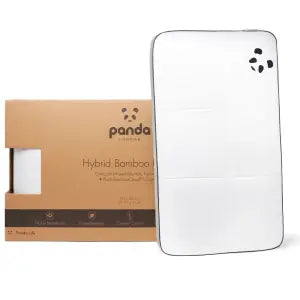 Hybrid Bamboo Pillow
Hybrid Bamboo Pillow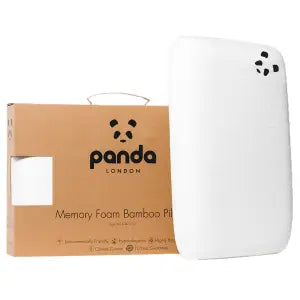 Memory Foam Bamboo Pillow
Memory Foam Bamboo Pillow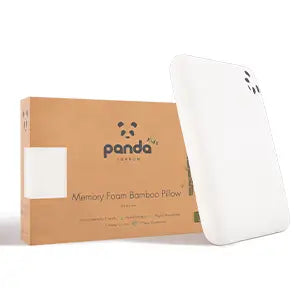 Kids Memory Foam Bamboo Pillow
Kids Memory Foam Bamboo Pillow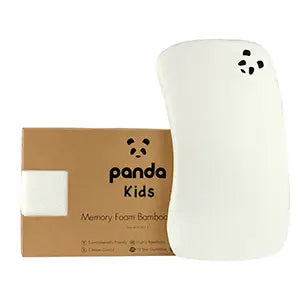 Baby Memory Foam Bamboo Pillow
Baby Memory Foam Bamboo Pillow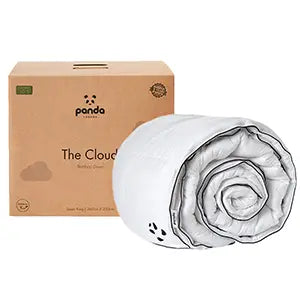 Panda Cloud Duvet
Panda Cloud Duvet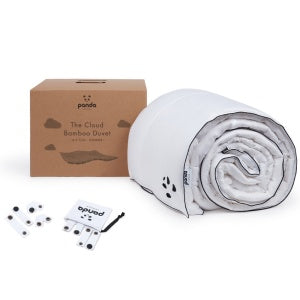 Bamboo Summer Duvet
Bamboo Summer Duvet Kids Cloud Duvet
Kids Cloud Duvet

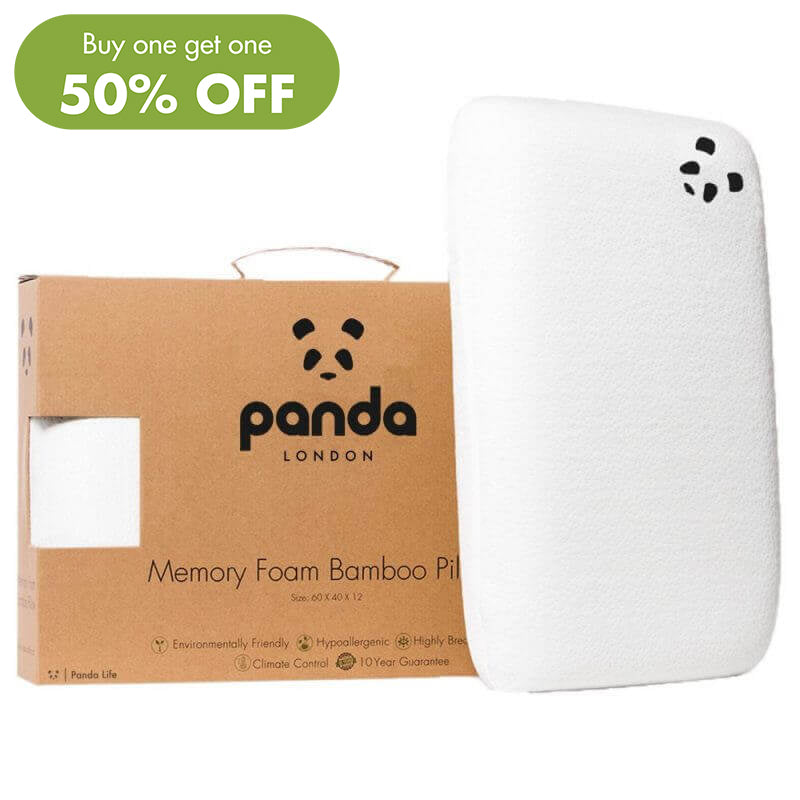
![[MemoryFoamPillow] Panda London Bamboo Memory Foam Pillow](http://pandalondon.com/cdn/shop/files/03_Memory_Foam_Bamboo_Pillow__alt01.jpg?v=1748854223&width=800)
![[MemoryFoamPillow] Panda London Bamboo Memory Foam Pillow girl hugging the pillow](http://pandalondon.com/cdn/shop/files/02_Memory_Foam_Bamboo_Pillow__alt02.jpg?v=1748854223&width=800)
![[MemoryFoamPillow] Panda London Bamboo Memory Foam Pillow on a Panda Topper](http://pandalondon.com/cdn/shop/files/Memory-Foam-Bamboo-Pillow-on-Bed-Topper-and-Adjustable-Straps-Shown-Lifestyle-Square-768x768_png.webp?v=1748854223&width=768)
![[MemoryFoamPillow] Panda London Bamboo Memory Foam Pillow Girl Holding Pillow Lifestyle](http://pandalondon.com/cdn/shop/files/01_Memory_Foam_Bamboo_Pillow__alt04.jpg?v=1748854223&width=800)
![[all] Bamboo Mattress Protector Package - PandaLondon](http://pandalondon.com/cdn/shop/files/Bamboo_Mattress_Protector_-_Packaging_Image_-_White_Background.webp?v=1721139172&width=1900)
![[all] Bamboo Mattress Protector for Hybrid Bamboo Mattress](http://pandalondon.com/cdn/shop/files/Bamboo_Mattress_Protector_New.webp?v=1721138562&width=1000)
![[all] Book on a Bamboo Mattress Protector](http://pandalondon.com/cdn/shop/products/Mattress-Protector-Listing-Images02.jpg?v=1721139189&width=1500)
![[all] Bamboo Mattress Protector Corner](http://pandalondon.com/cdn/shop/products/Mattress-Protector-Listing-Images03-e1623787734812.jpg?v=1721139189&width=1300)
![[all] Bamboo Mattress Protector Corner in line Panda London](http://pandalondon.com/cdn/shop/products/Mattress-Protector-Listing-Images04.jpg?v=1721139183&width=1500)
![[all] Panda Bamboo Mattress Protector Panda London](http://pandalondon.com/cdn/shop/files/Panda-Bamboo-Mattress-Protector-Guarantee-768x768_jpg_450393f5-91a9-499f-b15a-12d636a9a8b7.webp?v=1721139183&width=768)